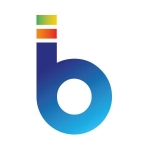Power Query, Power Pivot, Power View & SQL Server Data Tools comprising of (SSIS, SSAS, SSRS).
Data integration enabled my organization to easily pool data from our varied system into one data warehouse.
SSRS improved our report delivery timings and the Power BI feature empowered the data users.
Power View improved the visualization of our reporting and dashboards.
Yes, SSRS reporting portal cannot run on tablets, iPads and all other mobile devices. But SQL 2016 has been shipped with this capability.
Microsoft has a lot of products, hence some products are given little attention and VS is one of them, so I would say their technical support for the BI suite is average.
The initial setup was fairly simple and straight forward, I must say.
To others, I would advise that Microsoft BI products are rightly priced and the licensing is easy to follow and to fulfill.
For users intending to use the product in exclusively Microsoft environment, this product will meet most of your requirement if not all.
If there is a need for integration with other vendors’ products precautionary measures must be taken.
SQL 2016 is bringing and offering that support for mobile BI, so it would be great to give it a try.
If you are comfortable with MS Excel spreadsheets, then Power BI is your thing as it has the same look and feel of Excel, actually, it is embedded in Excel.

















